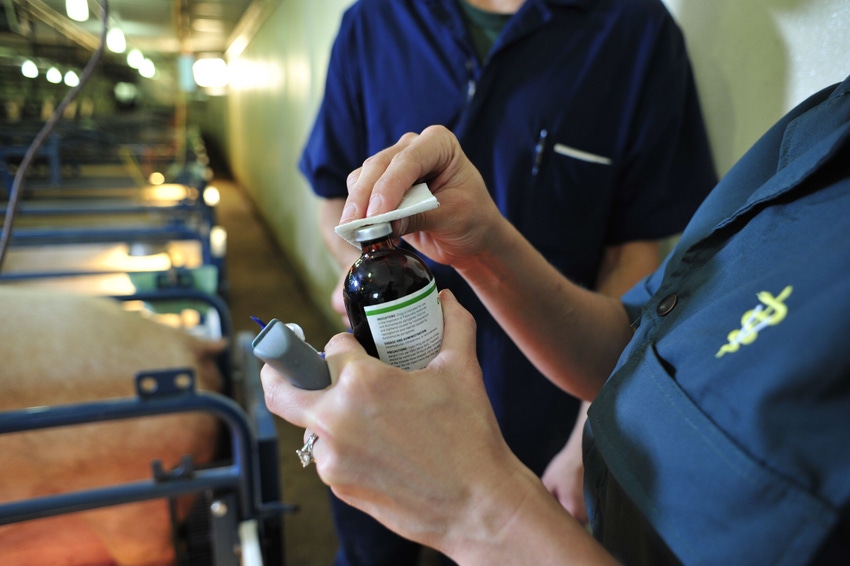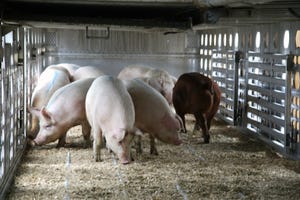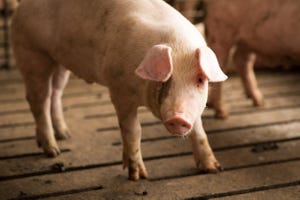How to save: Investigate use, frequency of pharmaceuticals
Dive into the data, and ask questions — how many pigs were in the trial?
April 23, 2024

By Douglas D. Groth, Carthage Veterinary Service
Finding the right balance between taking beneficial preventative measures and not spending an over-budgeted amount on pharmaceuticals for your pigs is a challenge all producers are faced with, but managing that balance is a way to find the best cost savings for your operation. In gauging the comprehensive well-being of your barns, specific factors play a crucial role in boosting productivity and profitability. Achieving a balance between cost control and the health of pigs necessitates a comprehensive approach to comparing and assessing all aspects of your health plan.
Taking a close look
The most important advice I can recommend is that all programs continuously evaluate what they are doing — what medications or vaccines are being used, and why did that product get placed? Ask yourself, what is necessary? What has been in for a long time? Are we still dealing with that challenge? Often during these reevaluations, I see hesitancy on the producers' side as they don’t want to change anything. Especially when things are going well and they have a good, healthy flow of pigs.
That’s why this process has to be inclusive of the people who are directly interacting with the animals, especially the barn teams, to provide perspective with the producers and veterinarians. What issues are they seeing in the barn? What issues have been cleaned up? You also don’t have to pull it from the whole program immediately, especially with some more broad-spectrum products, it can be wise to pull it from a group or two and see the effect first. A continuous evaluation of the value that the product is bringing.
Reactionary vs long-term use
Often, a product gets utilized as a reaction to a challenge or ongoing issue a barn faces. For example, if there is a flu outbreak at the sow farm and we are seeing coughing piglets, we tend to add an antibiotic around weaning to help cover that period they are coughing. The reaction might be to leave this intervention in place as it likely helped clean up that cough, but really, you should be able to pull that out fairly quickly as you are treating secondaries at that point. As you get the primary issue out of that turn, you won’t have that immune pressure on those piglets. There you can start moving to a spot treatment approach, rather than a whole herd intervention.
A diversifying market
The market of health products and solutions has, and will continue to, expand with more options. Comparing these options can be a beneficial way of finding out what truly fits your program based on overall cost and disease pressure needs. Producers can look between generics and name brands, and this can be the start of evaluating the best course of treatments for your farms.
Generics: Generic products have to go through the same governmental approval process to be similar to name brands for regulated products. We have some very good generic manufacturers out there that can make quality products with high efficacy. This is where a good relationship with your animal health supplier is of benefit. They can be good alternatives, however, you must balance the price and the partnership.
Service: Make sure you look beyond just initial costs, to understand what service they provide both for the product and beyond the product. How do they handle issues? What else do they provide — tech support? Diagnostics? Do they offer pricing bundles? These are all valuable aspects of a service provider to help keep you and your operation on target.
Show me the research: As you consider new production options, make sure you closely evaluate the research. There should be highly controlled studies that prove efficacy, but also research that demonstrates how the product can perform in a real-world situation. Dive into the data, and ask questions — how many pigs were in the trial? What were the conditions? What other results were collected? Have these results been repeated? Often graphs will get you a portion of the picture, but make sure you seek to understand the whole situation.
Final thoughts
I want to leave you with the idea that it is important to continue to assess and monitor all aspects of your pigs’ health. Keep searching for potential options and new ideas. It can be really easy to get comfortable with how things are going, or accept previous presidents as “normal.” However, just because it is common, doesn’t mean it's normal. My recommendation is to continue to challenge yourself, and your operation to find areas of improvement, and then find the right partner or option to help you improve and meet your goals.
You May Also Like



